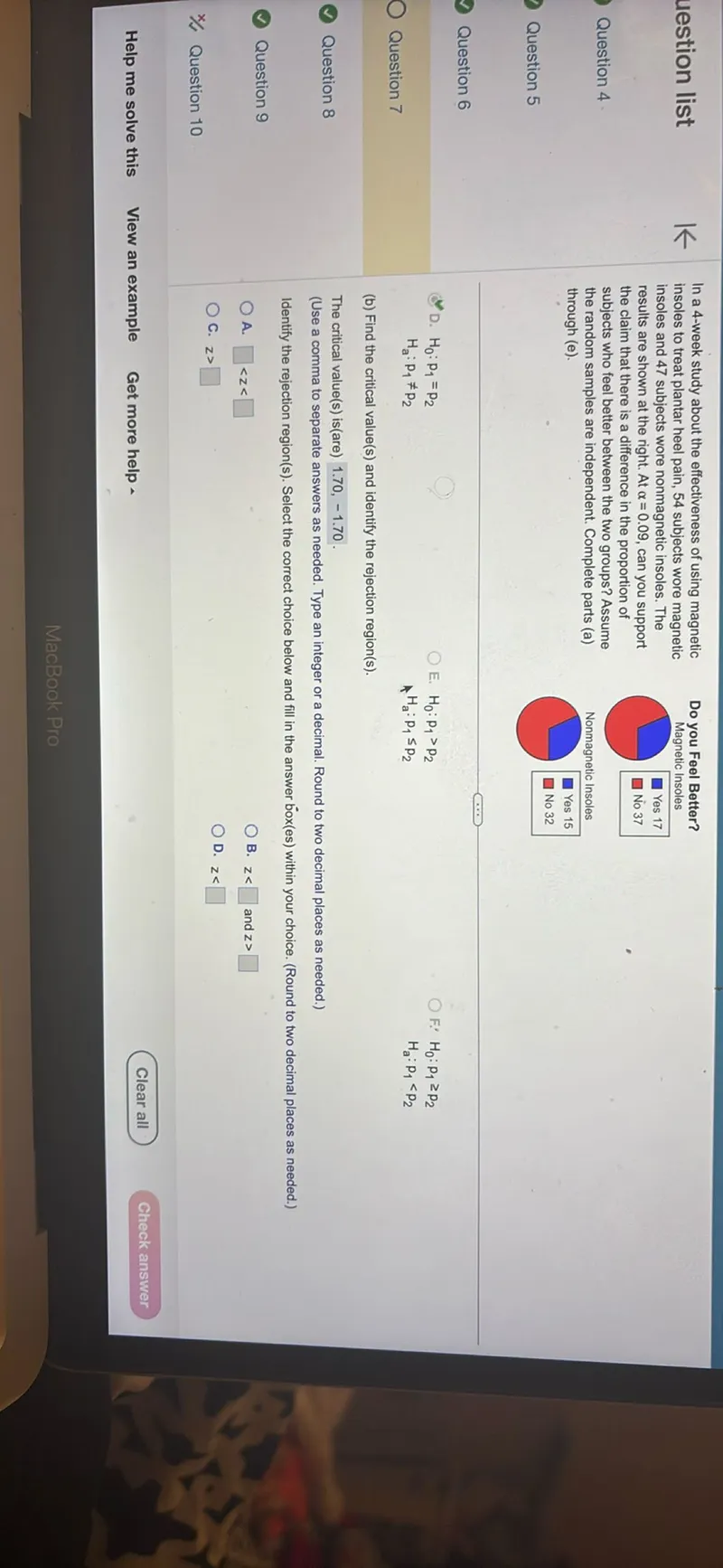Questions: In a 4-week study about the effectiveness of using magnetic insoles to treat plantar heel pain, 54 subjects wore magnetic insoles and 47 subjects wore nonmagnetic insoles. The results are shown at the right. At α=0.09, can you support the claim that there is a difference in the proportion of subjects who feel better between the two groups? Assume the random samples are independent. Complete parts (a) through (e). Do you Feel Better? Magnetic Insoles Nonmagnetic Insoles H0: p1=p2 Ha: p1 ≠ p2 E. H0: p1>p2 F. H0: p1 ≥ p2 Ha: p1<p2 (b) Find the critical value(s) and identify the rejection region(s). The critical value(s) is(are) 1.70,-1.70. (Use a comma to separate answers as needed. Type an integer or a decimal. Round to two decimal places as needed.) Identify the rejection region(s). Select the correct choice below and fill in the answer box(es) within your choice. (Round to two decimal places as needed.) A. <z< B. z< and z> C. z> D. z<

Transcript text: In a 4-week study about the effectiveness of using magnetic insoles to treat plantar heel pain, 54 subjects wore magnetic insoles and 47 subjects wore nonmagnetic insoles. The results are shown at the right. At $\alpha=0.09$, can you support the claim that there is a difference in the proportion of subjects who feel better between the two groups? Assume the random samples are independent. Complete parts (a) through (e).
Do you Feel Better? Magnetic Insoles
Nonmagnetic Insoles
\[
\begin{array}{l}
H_{0}: p_{1}=p_{2} \\
H_{a}: p_{1} \neq p_{2}
\end{array}
\]
E. $H_{0}: p_{1}>p_{2}$ F. $H_{0}: p_{1} \geq p_{2}$ $H_{a}: p_{1}$ $\square$
C. $z>$ D. $z<\square$





